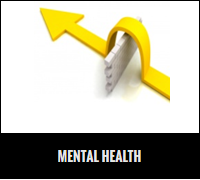INTRODUCTION
The task is ... not so much to see what no one has seen; but to think what nobody has yet thought, about that which everybody sees.
– ERWIN SCHRÖDINGER
As Dr. Richard Lerner explains in Concepts and Theories of Human Development, “Alternative world views lead us to ask different questions about development. Not better, just different. The real value of a new worldview and the theories it may bring forth is in its usefulness for descriptions, how well it explains development, and its use in devising new ways to optimize human behavior.”(1)
The Continuum Theory™ provides just such a worldview, a new definition of life span and human development, which more fully explains human development and opens up new worlds of possibility for reaching the optimum potential of each and every individual.
The concepts for the Continuum Theory were developed away from mainstream academia. After I obtained my bachelor’s degree in physics and philosophy, I had a hard time with the philosophy of psychology, so I left NYU’s Graduate School where I was studying movement therapy. Although Freud’s concepts were intuitive and well ahead of his time, I felt uncomfortable with the idea of building a science on them. It felt like a lot of the terminology was without strict, functional definitions, and I took issue with the convoluted imagery of the struggle between the ego, id, and superego, and the Oedipal Complex into which all problems had to fit. Jung, with his concepts of the twelve archetypes and the universal unconscious, was not a better fit for me. The developmental theories which focused primarily on the first ten years of life — the theories of Piaget, Erikson, Vygotsky, Bronfenbrenner, Ainsworth, Watson — all used observation and then developed a statement about that observation. Kant said, “Observation without theory is blind, theory without observation is empty”, clearly intimating which has to come first.(2) A theory is an intuitive insight into the nature of reality which needs to precede observation, not the other way around (like Schrödinger said, about something everybody sees but nobody has yet thought). Otherwise it is only a statement about an observation and not a theory, in my opinion.
And finally, the main reason I left mainstream academia was because, again in my opinion, if a theory of human development is truly a theory and not just a truism about a set of observable data, we should be able to apply it and get answers to all the issues and problems surrounding human development, not just for people up to age ten or in mid-life, or for dysfunctions, but rather for each and every phase, stage, and issue of life. A theory of human development needs to be able to give life to answers no matter where we look — which I did not see with the present set of theories and still don’t, and it is why I decided to search for answers that satisfied these two criteria for me. I placed myself at the margins — and here is what Joseph Melnick wrote about us working at the margins.
I believe that we continually have to develop universal new ideas and theories for growth and development to occur in any area. This is also true of our ideas of life span, human development, and the self, which are the areas I have been focusing on.








